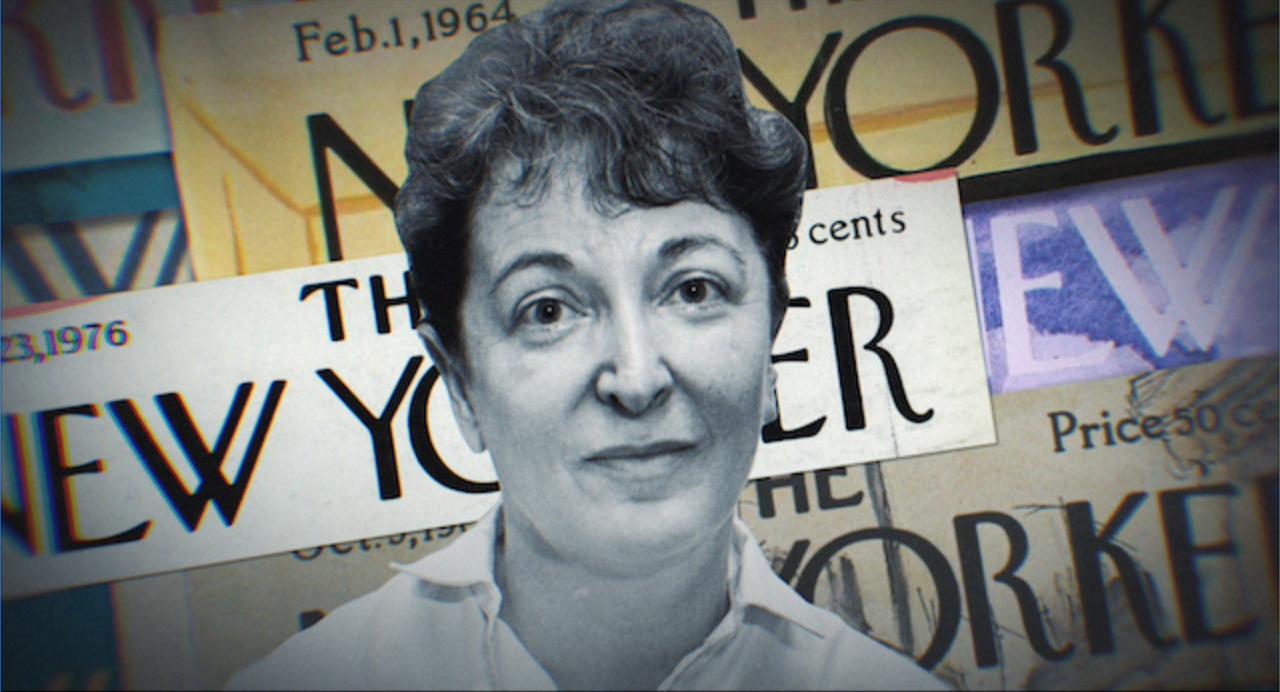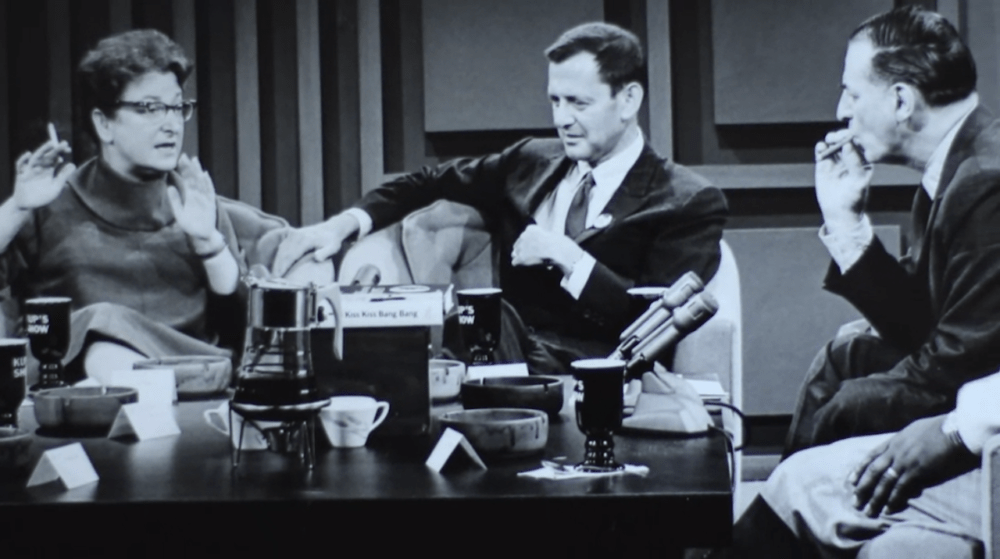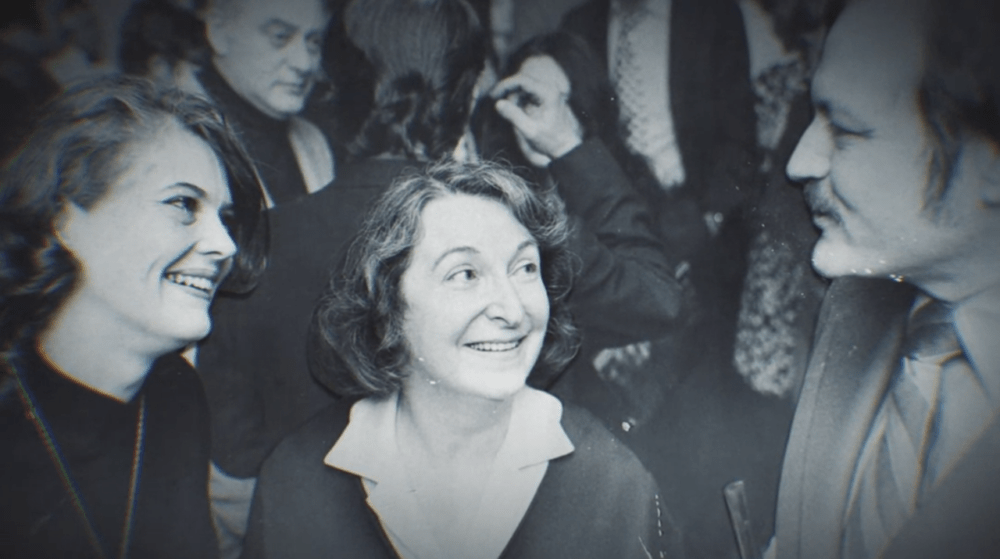Advertisement
Review
Documentary 'What She Said: The Art Of Pauline Kael' Is 'Just Not Very Good'

Norman Mailer used to call her “Lady Vinegar.” David Lean claimed he quit making movies for years because she was so mean to him at a New York Film Critics Circle luncheon. John Cassavetes once snatched the shoes off her feet and threw them out the window of a moving taxicab. Yes, Pauline Kael was the kind of writer who provoked strong reactions, especially from men who found themselves on the receiving end of her acerbic wit. But Kael was more than just a cranky critic, she was a one-woman revolution who opened up whole new ways of thinking and writing about movies during her tenure at The New Yorker from 1968 to 1991. “What She Said: The Art of Pauline Kael” is a long-in-the-works documentary attempting to shine a light on her legacy, and in the most depressing irony imaginable for a movie about a film critic, it’s just not very good.
I mean, it’s okay... I guess. As a collection of talking heads all nodding in admiration, haphazardly assembled with some relevant (and some not so relevant) movie clips and chintzy music, this is boilerplate dead-celebrity bio-doc stuff that will make pleasant enough home viewing for those with a mild interest in the subject. But anyone who’s read a lot of Kael will know immediately what’s missing here — that snap of excitement, the hints of sacrilege and the electricity of invention that prompted her most feverish work. Instead, it’s exactly the kind of stuffy hagiography Pauline probably would have hated.
The first of her 14 books was called “I Lost It at the Movies,” with double entendre titles to follow such as “When the Lights Go Down” and “Kiss Kiss Bang Bang.” Kael approached going to the movies as a thrilling, sensual exercise and her reviews were intensely personal reflections on the experience of watching. She didn’t write much about technique or composition but rather feeling and performance, lavishing entire paragraphs on an actor’s gestures or a movie’s mood. Kael’s columns were often more fun to read than the films themselves were to watch, intoxicating in their insouciant banter and mad movie love. She wrote like one of those brassy dames from the 1930s screwball comedies she so adored. (Whenever I find myself blocked, I pull one of her collected volumes off my shelf and take a couple of hits for inspiration, making sure not to read for too long lest I get intimidated and start feeling like a fraud.)

“What She Said” covers the baseline biographical strokes, with Kael’s humble beginnings as a bohemian single mom managing an arthouse cinema in Berkeley, writing capsules for their film guide and reading reviews on public radio. We get her famous firing from McCall’s after panning “The Sound of Music” (among other popular movies) decrying the film’s “sexless, inhumanly happy” star Julie Andrews as, “the sparkling maid, a mind as clean and well-brushed as her teeth.” Kael was told that she was out of touch with the mainstream just as the mainstream was about to catch up with her. “Bonnie and Clyde” baffled 99% of critics but Kael called it right away, immediately establishing herself as the head cheerleader for the single most exciting era in American film.
It’s remarkable in retrospect that at a revered literary establishment like The New Yorker under fuddy-duddy editor William Shawn that Kael was able to champion the then-wonderfully disreputable works of Martin Scorsese, Robert Altman, Sam Peckinpah and her beloved Brian De Palma. For someone who publicly pooh-poohed the auteur theory, Pauline still had a stable of favorite filmmakers, most of whom provided kinetic kicks or downmarket delights. Her seminal essay “Trash, Art and the Movies” sought to take cinema appreciation out of the ivory tower:
Far from supervision and official culture, in the darkness at the movies where nothing is asked of us and we are left alone, the liberation from duty and constraint allows us to develop our own aesthetic responses. Unsupervised enjoyment is probably not the only kind there is but it may feel like the only kind. Irresponsibility is part of the pleasure of all art; it is the part the schools cannot recognize.
“What She Said” features interviews with Pauline protégées like New York Magazine’s David Edelstein, Time’s Stephanie Zacharek and critic-turned-cinema-legend Paul Schrader. But the most amusingly effusive commentary comes from two filmmakers — David O. Russell and Quentin Tarantino, gushing about how her writing shaped their early understanding of the medium. (One wonders if they might not also be a bit relieved that she retired shortly before they both started making movies.) Other directors have been famously less charitable — with Ron Howard naming the villain in his 1988 bomb “Willow” General Kael, and her bête noire Clint Eastwood devoting an entire plot point of his final Dirty Harry vehicle “The Dead Pool” to the murder of a movie critic who looks and sounds awfully familiar.

Those latter two tidbits are missing from “What She Said,” (as is the story about Cassavetes and the shoes) which I guess understandably tends to steer away from anything that isn’t too laudatory, giving short shrift to some of the controversies that dogged Kael’s career, including a much-debated book about the making of “Citizen Kane” and her short-lived sojourn in Los Angeles as a Paramount Pictures executive working at the behest of Warren Beatty. More baffling to me are directorial choices like having Sarah Jessica Parker read aloud from Kael’s reviews — her Carrie Bradshaw intonations a terrible match for the voice we hear in archival footage — or the inexplicable inclusion of clips from “The Big Lebowski,” a film released seven years after her retirement and about which I do not believe Kael ever publicly commented.
All that aside, there are worse ways to spend an hour-and-a-half than listening to people talk about Pauline Kael, and the documentary did take me back to all those hours I spent as a teen at my local library poring over her books, alternately infuriated and enthralled by what I was reading. There’s something so sad about our contemporary culture’s emphasis on consensus, with things like Rotten Tomatoes scores passing off conventional wisdom as irrefutable data. Watching “What She Said” at least reminds you that criticism can be so much more than a consumer guide, and in the right hands is an art form all its own.
“What She Said: The Art of Pauline Kael” opens Feb. 21 at Kendall Square Cinema.
